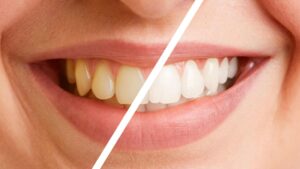Top Benefits of Choosing White Restoration for Your Teeth
Introduction
Dental care has come a long way from its rudimentary beginnings, evolving into a sophisticated field that not only addresses health issues but also aesthetic concerns. One realm that has gained significant attention in recent years is cosmetic dental procedures, a subset of dentistry dedicated to improving the appearance of your teeth, gums, and overall smile.
The evolution of dental care from basic treatments to comprehensive oral solutions has led to an increased focus on aesthetics. In today’s world, a radiant smile does more than just brighten a face; it can significantly impact self-esteem and social interactions. That’s why procedures like white restoration are gaining in popularity, blending both the functional and aesthetic aspects of dental care into one package.
In this blog, we will explore the top benefits of opting for white restoration, a cosmetic dental procedure that offers more than just a beautiful smile.
II. What is White Restoration?

White Restoration, also known as composite resin restoration or tooth-colored restoration, involves the use of tooth-colored materials to restore decayed or damaged teeth. Unlike traditional silver amalgam fillings, white restoration materials mimic the natural color and texture of teeth, offering a seamless, inconspicuous solution to various dental issues.
In the realm of cosmetic dental procedures, white restoration fits perfectly as it addresses both functional and aesthetic needs. It not only fills cavities or repairs damage but also enhances the overall appearance of your teeth. This dual benefit makes it an increasingly popular choice for those looking to improve both the health and beauty of their smile.
III. Top Benefits of White Restoration

·
- Natural Appearance
White restoration uses tooth-colored materials that blend seamlessly with your natural teeth, giving a more natural and attractive appearance than metal fillings.
- · Enhanced Durability
The modern composite resins used in white restoration are incredibly strong, providing a durable solution that can withstand the pressures of biting and chewing.
- · Safety and Biocompatibility
White restoration materials are generally free from metals and other potentially harmful substances, reducing the risk of allergic reactions or toxicity.
- · Conservative Approach
This procedure often requires less removal of the natural tooth structure compared to traditional fillings, thereby preserving more of your natural tooth.
- · Stain Resistance
The materials used are less prone to staining compared to other types of fillings, helping maintain the restored tooth’s color over time.
- Boosted Self-confidence
A restored, natural-looking smile can significantly boost your self-esteem, making you more confident in social and professional settings.
These benefits make white restoration an increasingly popular choice for individuals seeking to improve both the function and appearance of their teeth.
IV. How White Restoration Fits Into Comprehensive Dental Care
Intersection of Aesthetic Desires and Necessary Dental Care
White restoration bridges the gap between aesthetic concerns and essential dental care. While enhancing the look of your smile, it also serves the core purpose of restoring damaged or decayed teeth, offering a balanced approach to oral health.
Proactive Step Towards Maintaining Oral Health
Opting for white restoration is not just a cosmetic choice; it’s a health-conscious one too. Its durable materials and conservative approach help in preserving the natural tooth, making it a forward-thinking option for those invested in long-term dental well-being.
White restoration thus stands as a comprehensive solution in modern dental care, providing both functional and aesthetic benefits.
Frequently Asked Questions About White Restoration
What is White Restoration?
White Restoration, often called composite resin restoration, is a cosmetic dental procedure that uses tooth-colored materials to repair decayed or damaged teeth.
Is White Restoration Safe?
Yes, white restoration is generally safe and biocompatible, posing a lower risk of allergic reactions or toxicity compared to other materials like metal fillings.
How Long Does White Restoration Last?
The durability varies but modern composite resins are incredibly strong and can last several years, depending on factors like the location of the filling and individual dental habits.
Does it Stain Easily?
White restoration materials are less prone to staining compared to other types of fillings, helping maintain the color of the restored tooth over time.
Is White Restoration Expensive?
While generally more expensive than traditional amalgam fillings, the added benefits of aesthetics and functionality often make it a worthwhile investment.
Is White Restoration Right for Me?
If you’re seeking both aesthetic appeal and functionality, white restoration may be an excellent choice. However, consult your dentist to determine if it’s the right option for your specific needs.
How is White Restoration Different from Amalgam Fillings?
Unlike metal amalgam fillings, white restoration offers a natural appearance, as it uses tooth-colored materials. It also generally requires less removal of the natural tooth structure.
Can White Restoration Be Used for Front Teeth?
Yes, white restoration is especially popular for front teeth due to its natural appearance, blending seamlessly with the existing tooth.
How Do I Maintain My White Restoration?
Routine dental care like brushing, flossing, and regular dentist visits are crucial. Some dentists also recommend avoiding foods and drinks that stain easily to prolong the life of your restoration.
What Should I Do if My White Restoration Fails?
If you experience any issues with your white restoration, like chipping or dislodging, consult your dentist immediately for assessment and possible repair or replacement.















